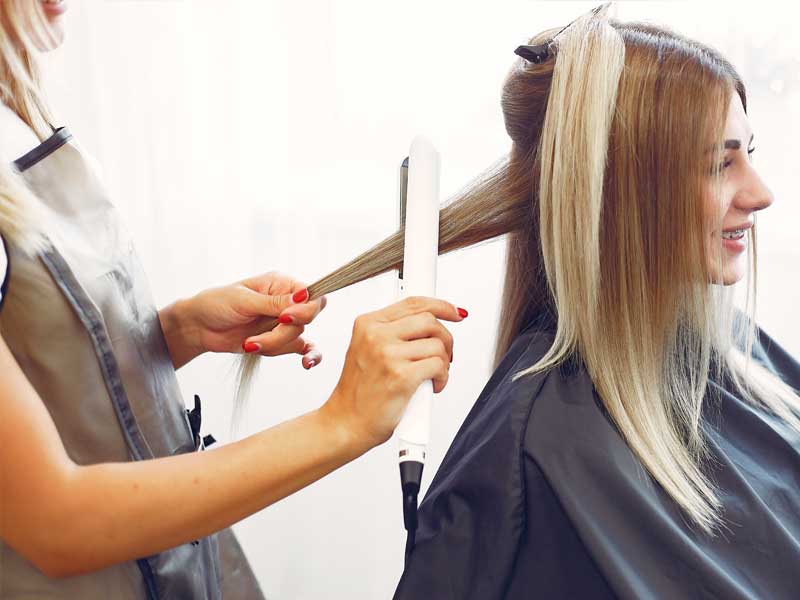Table of Content
If you're treating traction alopecia, it's best to ditch the relaxer and embrace your natural texture. But if you're using a blow-dryer or flat iron too often, you could be damaging your hair—and increasing your risk of traction alopecia. Traction alopecia can be permanent if you don't intervene at an early stage. A few warning signs can indicate if your traction alopecia is getting worse. Consult your doctor immediately to get the right medication for yourself.

A study conducted on a group of men shows that those who took 400 mg of pumpkin seed oil a day noticed a 40% increase in hair count in six months. Traction alopecia causes swelling on your scalp, which can be painful. An anti-inflammatory cream can help reduce pain and swelling. Mix these ingredients thoroughly and then apply the paste to the bald patches on your scalp before going to bed. You can also grind beetroot leaves or beet greens along with henna to create a paste to apply to your scalp. Leave the paste in your hair for 15 to 20 minutes before rinsing out.
All About Traction Alopecia
In most cases, this redness may also be simultaneous with ulcers forming at the base of a ponytail or braid. Our experts continually monitor the health and wellness space, and we update our articles when new information becomes available.

Essential oils like cedarwood, thyme, lavender, tulsi, and rosemary can help treat traction alopecia. If you don't see new hair growth after a few months of taking preventive measures, it's time to seek medical attention. Your follicles are probably damaged, and if there is any scarring, your hair may not grow back.
Traction Alopecia Symptoms
Just make a few adjustments to how you're securing your tresses so that it's not as tight. Our home remedies can help you treat simple cases of alopecia, but they are not all-inclusive cures. Severe cases of alopecia are typically related to more severe conditions and autoimmune diseases for which you will need the advice and treatment of a healthcare professional. It works by encouraging blood flow to hair follicles, stimulating dormant follicles, and aiding hair growth. As alopecia areata can be a serious autoimmune condition, which affects people in a myriad of ways, we wanted to explore a range of treatment options.

If you’ve lost a lot of hair and it’s not growing back, a hair replacement procedure may be an option. This may take between20 to 40 minutesdepending on the size of the area. Find qualified telemedicine providers for a variety of symptoms and conditions.
Ways Your Skin Can Reveal Underlying Health Problems
Traction alopecia is a form of hair loss in which mechanical damage to the hair follicle is caused by repeated tension or pulling. This type of hair loss is common among people with skin of color, especially African-American women, although it may be seen among all ethnic groups and ages. Ballerinas, gymnasts, military personnel and certain professionals who are required to wear their hair pulled back, may develop traction alopecia. Minoxidil is a topical solution that's often used to treat hair loss and promote hair growth. This traction alopecia treatment works by increasing blood flow to the scalp and widening the hair follicles, stimulating hair growth. If the hairloss is not too severe then the hair should regrow naturally as long as the follicles are properly rested until normal, healthy hair growth resumes.
But make sure the hair is not cornrowed too tight, as these can also be the source of traction alopecia. However as time goes by, and the traction to the hair is sustained for a long time, one may begin to see areas of shiny, scarred skin. Traction alopecia is a loss of hair caused by repeated pulling tension or stress on the hair and its follicles. Pumpkin oil is another important home remedy for traction alopecia. The effects of pumpkin oil on hair growth have been proven by experts and have also been backed by scientific studies. According to a Korean study, the recommended amount of pumpkin oil to be used daily is 400 mg, which can lead to a 40% increase in hair count over a period of 6 months.
Traction Alopecia: Causes, Treatments, and Prevention Tips
Avoiding chemicals or heat in your hair may also be helpful in managing traction alopecia. In the early stages of traction alopecia, it is possible to reverse hair loss. However, chronic traction alopecia can lead to permanent scarring that prevents hair regrowth. Coconut oil is one of the most common ingredients in Ayurvedic formulations, especially for hair loss.

Always consult a medical provider for diagnosis and treatment. However, you can better manage your flares and reduce your risk of serious psoriasis-related conditions by eating healthy. Treatment for traction alopecia depends on the stage and duration of the condition. Although the root cause of alopecia is your immune system, other factors such as stress and vitamin D deficiency might contribute further to hair loss. So take up activities that will help you de-stress , exercise regularly, and soak up on enough of vitamin D. Aloe vera gel is frequently recommended for application on the scalp to treat hair loss.
Whether you're looking for traction alopecia treatment at home or seeking professional help, it's important to first identify the signs and symptoms of this condition. Learning how to treat traction alopecia properly is just one part of the equation. Knowing what to avoid both at home and in the salon is key to preventing any further damage which may cause hair loss. If you are facing severe signs of traction alopecia, you need to consult your doctor immediately. Scarring can not be cured with any topical cream, and your hair may get permanently damaged.

The first step to growing your edges back is to avoid all tight hairstyles and to discontinue use of chemical relaxers. Other medical treatments include hair transplants and flap surgery, but you should only consider these if you’ve tried all else. Once a style like braids is installed, it’s likely that the wearer will continue with the pain, itching, and irritation, until their hair grows out and the problem lessens. People with traction alopecia should consider changing hair care and styling practice to prevent further deterioration.

No comments:
Post a Comment